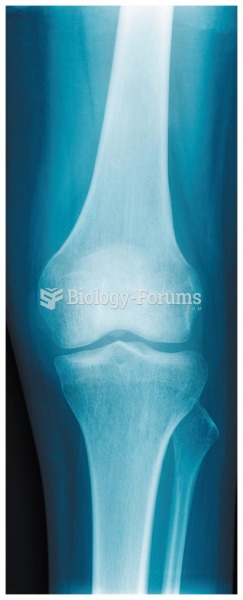This topic contains a solution. Click here to go to the answer
|
|
|
Did you know?
Calcitonin is a naturally occurring hormone. In women who are at least 5 years beyond menopause, it slows bone loss and increases spinal bone density.
Did you know?
Illicit drug use costs the United States approximately $181 billion every year.
Did you know?
Computer programs are available that crosscheck a new drug's possible trade name with all other trade names currently available. These programs detect dangerous similarities between names and alert the manufacturer of the drug.
Did you know?
Medication errors are more common among seriously ill patients than with those with minor conditions.
Did you know?
The people with the highest levels of LDL are Mexican American males and non-Hispanic black females.







